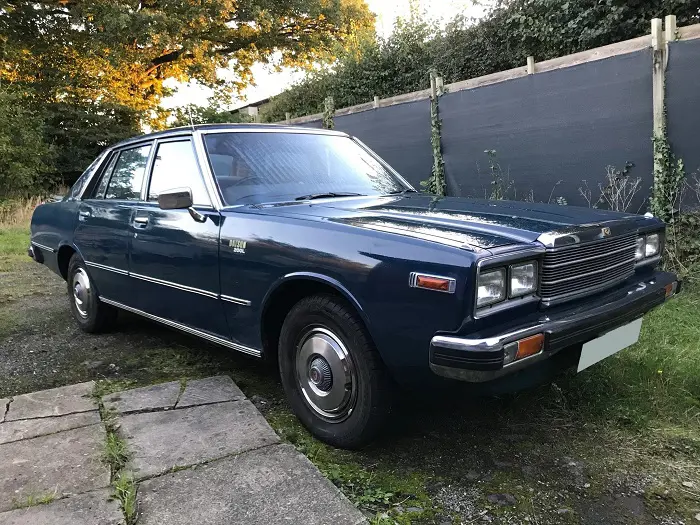RARER THAN RARE – 1979 DATSUN 200 LAUREL
14 November 2024
Way back in 1979, when The Buggles sang about how video killed the radio star, a Datsun 200L Laurel was the car of choice for discerning executive motorists. The formula of a 2-litre OHC six-cylinder engine and agreeably quasi-Atlantic lines was ideal for the chartered accountant with a position to maintain. Its 1977 launch advertisement could not be accused of false modesty:
If the engineering of the Merecedes 200 impresses you,
Or the luxury of the Peugeot 604 appeals to you:
If the safe design of the Volvo 244 reassures you,
Or the styling of the Audi 100 attracts you;
If the performance of the BMW 520 excites you,
...and you want an executive saloon with an extremely high level of equipment, Datsun presents...

Octav Botnar, a Sussex-based entrepreneur, began importing Datsuns in 1968. Three years later, UK sales exceeded 6,000. One of the concessionaire's directors told Autocar: “Datsun’s sales policy will be achieved only by appointing a well-established, professional, family business, well known with deep roots and respected in their own locality”. A former Datsun GB employee, Bill McWilliams, explained in aronline.co.uk how the importer understood its customers were frequently not motoring enthusiasts. Instead, they were drivers who covered a high mileage but often had no great interest in cars.
Such buyers typically sought reliable family transport and Datsun’s total sales approaching 223,000 cars demonstrated the success of this formula. On the 3rd of December 1980 the concessionaire proudly announced: “Datsuns are, for the seventh successive year, Britain’s best-selling traditional imported cars”. The bulk of this success was due to Datsun’s small and medium-sized saloons, and Botnar imported only a handful of the 280C saloons at the opposite end of the market. The Laurel bridged the gap between the Bluebird and the Cedric, and the third generation C230-series of 1977 rivalled the Toyota Cressida and the Mazda 929 in its home market.
In late 1979 a Laurel 200L cost £5,836 compared with £5,922 for a Ford Granada 2-Litre L, a Princess 2000HLS for £5,961 or £6,085 for a Vauxhall Carlton. Such a sum gained you an agreeably quasi-American-looking saloon with power-assisted steering, a radio/auto-reserve cassette player, a height-adjustable steering wheel, and even fibre-optic monitors on each wing so the driver could see if the sidelights were working.
Autocar thought the Laurel “a roomy and generally comfortable car, and very equipped”, although its bodywork “makes no concessions to aerodynamics”. For many buyers, the 200L’s appearance was part of its appeal. The C31-series replaced the C230 in 1980, and this is one of the few surviving 200Ls. It is a fascinating reminder of when a large Datsun saloon was a faintly exotic alternative to a Ford Granada. As the brochure said: “You can feel the quality of Datsun in the quietly impressive way the doors ‘clunk’ shut; the deeply padded seats cosset you, while the car whispers you along”.
With thanks to the owner for his time and permission to use the images in this blog.
